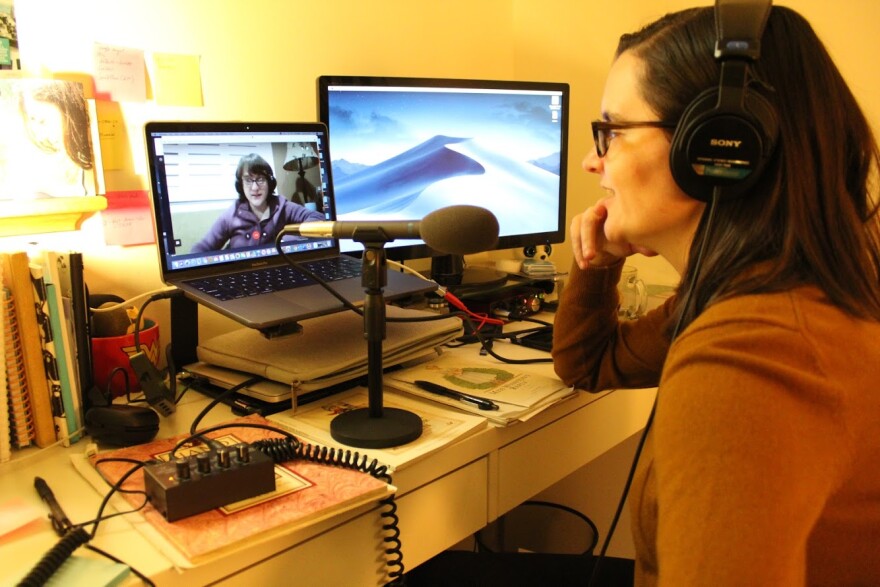Everybody knows girls don’t play with dolls after age six. At least, that was the toy industry’s belief in the mid 1980s, when a former schoolteacher named Pleasant Rowland dreamed up the concept for American Girl Dolls.
Rowland couldn’t find the right gift for her preteen nieces, so she decided to create her own line of dolls. They were inspired by a trip Rowland took to Colonial Williamsburg. The immersive history experience made Rowland think older girls would be interested in dolls that told the stories of their peers who lived during different eras.
Rowland created high-end dolls that each came with a series of six books retelling a historical event. Felicity stirred up trouble in Williamsburg just before the American Revolution. Addy escaped from slavery and fled to Philadelphia with her mother during the Civil War. The dolls took off and became a status symbol for girls in the late '80s and '90s. In 1998, Rowland sold her company to Mattel for $700 million. The new owner placed more focus on modern-day dolls that could be customized to “look just like you.”
Today, many Millennial and Gen-X women feel nostalgic for the original generation of American Girls inspired by the past. Among them is Mary Mahoney, who is part of an active fan community online.
Mahoney received an American Girl doll when she was 9-years-old during a visit to her grandmother’s house in Hartford, Connecticut.
“I remember unwrapping it on Christmas Eve and just being filled with a sense of wonder,” Mahoney says.
Her doll’s name was Molly. She had Mary Jane shoes, a wartime steel penny, and six books about how Molly learned to make sacrifices while her dad was overseas in World War II.

"I know how many girls coveted the dolls,” Mahoney says, “I remember loving the doll and seeing that she had glasses and I had just gotten glasses myself, but also looking at the books and thinking ‘can I hide in a corner of this house somewhere and just dip into these books right now?’”
Mahoney continued to devour historical fiction books as she got older. Eventually, she went to the University of Connecticut to earn a Ph.D.in history. She had no problem telling her graduate school classmates what made her want to become a historian.
“For me, the real answer was American Girl. It was that thing that inspired my imagination and if nothing else, history is a feat of imagination.”
Mahoney remembers how her classmates reacted: “People laughed at me and said, ‘Oh, dolls?’ and were so relegating that as trivial.”
But Mahoney admired the dolls and books about each of the American Girls because the authors put the stories of these fictional girls at the center of history.
“When I went on to study history...I was kind of shocked to find that that was not often the case,” Mahoney says. "The stories of girls and women were not often at the center of those kind of big narratives you get in school.”
Thankfully, Allison Horrocks was also working on her history Ph.D. at UConn. She and Mahoney became best friends and bonded over their American Girl fandom.
“We sort of thought, ‘well, if we ever finish graduate school it would be really fun to do something on the history of American Girl because we met all these other women, our peers in different careers, even, who had been inspired by these books and this kind of culture,” Mahoney explains.
Mahoney and Harrocks went to a regional history conference with a proposal.
“‘What if we did a podcast about American Girl?” Mahoney remembers the response was overwhelming. “All these women showed up at our conference, really just to have a space to tell their stories.”
That conference was two years ago. Mahoney is now the Andrew W. Mellon Postdoctoral Fellow in Digital Humanities at Trinity College in Hartford. Horrocks is a ranger at Lowell National Historic Park in Massachusetts. In February 2019, they finally launched their dream podcast.
Horrocks introduced the first episode: “Hello, and welcome to the American Girls Podcast. My name is Allison.”
“And I’m Mary, and this is a show where we’re going to be reliving the American Girl Series, one book at a time,” Mahoney chimed in.
They host from their respective homes, Mahoney in her living room in Connecticut, Horrocks in her home office in Massachusetts. The show is part pop culture banter between besties, part historical analysis.
“The writing in this book and the plotlines are very Shonda-like,” Mahoney draws parallels between the American Girls book, "Changes for Kirsten," and the ABC medical drama, "Grey’s Anatomy," created by Shonda Rhimes. “There is no limit to what may be possible in this situation.”
Their takes on some problematic plot points, as well as issues of race and class, helped the podcast take off in the fall. Weekly downloads surpassed 10,000 after TV critic Margaret Lyons reviewed the show for the New York Times. This month, Lyons made a guest appearance.
“Thank you so much for agreeing to do this. This is like a celeb sighting,” host Mary Mahoney said.
“Oh my god, this is like the best for me!,” Lyons said through her webcam, “I’m so happy!”
Lyons grew up with American Girl, too. She told Mahoney and Horrocks what it’s been like re-reading the series along with them.
“I had remembered these books as having a much clearer banner of like, I hesitate to say it, but ‘girl power’ stuff,” Lyons explained. “What actually they are, is just a pretty good lived experience of a girl.”
Lyons told the hosts the podcast helped her unpack how American Girl inspired her creative life.

Mine, too. I had a few American Girl dolls. The last was a gift from my grandmother: a doll named Kit. She was a Depression-era tomboy who dreamed of becoming a newspaper reporter.

